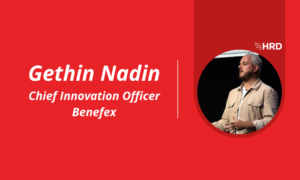Pensions are easy, but people are difficult
- 6 Min Read
How can people leaders help their employees to help themselves by putting their pensions first? Steven Leigh, Senior DC Consultant, Aon, gives his top tips for making pensions a priority.
- Author: Steven Leigh
- Date published: Jan 10, 2020
- Categories

Every employee now needs to know how to create and execute their own retirement savings plan. But how many of your employees know how much money they’ll need when they retire, and how they’ll achieve that sum over the course of their working life?
While auto-enrollment has helped more employees than ever to save towards retirement, that’s just the beginning. Breaking through the perceptions that pensions are complicated and ‘something for the future’, is a vital part of helping employees make better decisions about their retirement plans throughout their working lives.
Pensions are easy…
At their core, pensions are incredibly simple. You save money on a regular basis, it is invested efficiently, and you use that money to fund your living costs once you decide to reduce or stop working.
To back that up, there are just five key decisions that an employee needs to make:
- Stay – I’ve been auto-enrolled into my workplace pension scheme: should I stay in it?
- Pay – should I pay in more or less into my pension?
- Invest – should I change where my money is invested?
- Retire – when do I plan to retire?
- Spend – how should I take my retirement benefits?
…but people are difficult
If there are just five questions to answer, why do employees believe that pensions are complicated? The reason isn’t the mechanics of pensions, (although jargon heavy communications have not helped in the past), it’s more around our complexity and diversity as human beings. Individuals have a range of attitudes to money, personal circumstances, behavioral attributes and other factors that determine how they view saving for retirement.
For example, people find it difficult to save for a ‘future self’ that they don’t recognize. They estimate how long they’ll live based on their grandparents’ life expectancy rather than current healthcare trends. They’ll take the advice of family and friends in preference to approaching a financial adviser. And, they’ll base how much they need to contribute into a pension each month on the rate set by their employer, rather than what they actually need for their retirement.
All of these behavioral factors and more affect the way that employees respond to those five basic pension decisions. They determine the extent to which employees need tasks to be automated for them, and when they want to feel empowered to take control of their savings. In other words, we need to remove sources of friction that get in the way of saving, and add fuel that will incentivize employees to engage with their pension and drive better decision-making.
Remove friction
There are countless situations where ‘friction’ gets in the way of achieving a particular goal, whether that’s failing to eat healthily because unhealthy foods are so much more accessible or getting a piece of work finished when a colleague keeps interrupting us.
There are many similar barriers that limit employees’ ability and willingness to save for retirement. Although auto-enrolment has been a great success in removing friction from the process of saving into a pension, there is still plenty of work to do. Sources of friction might include:
- Employees are unsure how much money they need to save to ensure a comfortable retirement, so they switch off from the process
- They are more concerned about day-to-day living costs and unable to think about their future savings needs
- Technology is difficult to use or requires log-in details that are hard to remember
A review of the processes within a pension scheme can quickly reveal sources of friction and help schemes start to identify ways of removing it.
Add fuel
As well as removing friction from pensions, scheme members also need fuel – incentives that will inspire them to save or help them to do so with little or no effort. That could include good quality short communications and the use of ‘nudges’ to help drive engagement and decision-making.
Personalizing communications is one way to add fuel. For example, Aon found 42% of scheme members who were sent personalized videos clicked through to watch them. Almost all watched through to the end, and over a third of those that watched subsequently clicked through from the video to a call to action.
Similarly, using targeted mini-statements that show people how much difference a small increase in pension contributions might make to their personal retirement prospects encouraged 72% of members of one scheme to make an active decision to increase their contribution rate or review their target retirement age.
However, to create truly personalized communications and deliver meaningful nudges requires good quality data that goes beyond the basics such as dates of birth and anticipated retirement dates. These don’t tell us much about employees’ attitudes towards money and what will inspire them to save more in the future.
Behavioural data, which predicts what employees might do in the future, based on how they’ve behaved in the past, can help to build a more effective picture of employees’ pension savings habits. Attitudinal segmentation is another technique which is widely used in consumer marketing, and in the case of pensions, bases communications on information about individuals’ approaches and attitudes towards saving.
The easiest way to gather information about employees’ attitudes to money is to ask them through surveys or focus groups. But, remember, people are difficult. We all tend to respond to questions in surveys and focus groups based on context and our situation at that particular point in time. That makes it difficult to find truly accurate attitudinal information. An emerging technique is through the use of Apps, which can track behaviors and responses over time to be able to deliver tailored messages at the right time and in the right way.
Even if that data isn’t perfect, the fuller the picture we have of employees’ behavior, the easier it becomes to build a pensions strategy that removes friction, adds fuel for the future and enables all employees to formulate their own answers to the five basic decisions that make up pensions.
By Steven Leigh, Senior DC Consultant, Aon.









